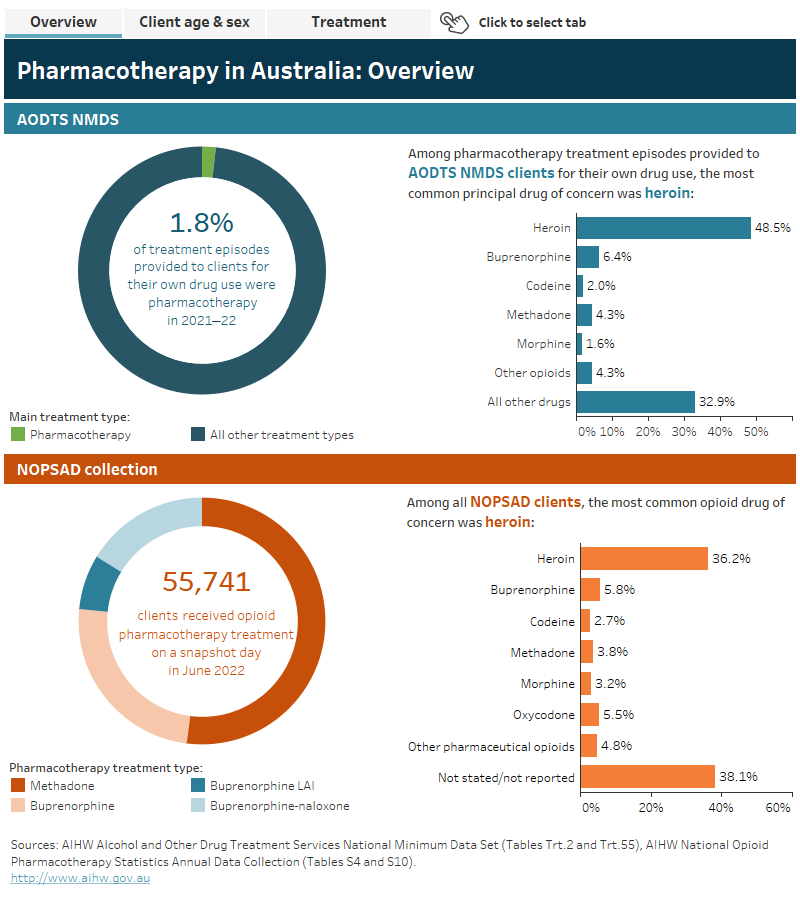Pharmacotherapy in Australia Data
Opioid pharmacotherapy is one of the main treatment options for dependence on opioid drugs, such as heroin and morphine. Treatment involves replacing the opioid drug of dependence with a legally obtained, longer-lasting opioid. In Australia, clients attend dosing point sites (for example, pharmacies) regularly to take the dose of their prescribed medication under the supervision of a pharmacist or other health professional.
Clients who receive pharmacotherapy treatment can be captured in various data sources. The two national sources presented in this report are:
- Alcohol and Other Drug Treatment Services National Minimum Data Set (AODTS NMDS).
- National Opioid Pharmacotherapy Statistics Annual Data (NOPSAD) Collection.
Due to the specifications of these collections, it is not possible to directly compare or identify people who received pharmacotherapy treatment via dosing point site as well as treatment from a publicly funded alcohol and other drug (AOD) service (see technical notes for more details). However, exploring this information in parallel can provide a more detailed picture about pharmacotherapy treatment in Australia.
The interactive data dashboard provides an overview of pharmacotherapy treatment in AODTS NMDS in 2021–22 and in the NOPSAD collection on a snapshot day in June 2021 (NOPSAD data does not include Queensland).
In 2021–22, 1.8% of AODTS NMDS treatment episodes provided to clients for their own drug use involved pharmacotherapy as the main treatment type. Among these episodes, the most common principal drug of concern was heroin (48.5% of AODTS NMDS pharmacotherapy episodes).
On a snapshot day in June 2022, 55,741 clients received opioid pharmacotherapy in the NOPSAD collection. The most common pharmacotherapy treatment type was methadone (50.2% of clients) and the most common opioid drug of dependence was heroin (36.2% of NOPSAD clients).
Navigation buttons allow the user to navigate between the following tabs: Overview, Client age and sex, and Treatment.



